Business Benefits With Recruitment Automation
Technology is interpreting every personal and professional space of individuals. It has become an inseparable entity when it comes to getting things done in an organized and professional manner. The latest intrusion of technology is witnessed in the Human Resource sector. The management of the workforce in other words employees are always at risk when the number of employees is huge.
However, with automation, human resource management has become a lot simpler. Recruitment automation especially has given the space for HR professionals and other managers to focus on the strategic development of the employees and the company. It has totally changed the way, the HR professionals practice recruitment processes and carry enlistment strategies.
To start with, let me brush off the whole existing notion of automation.
For many, automation simply denotes machines overtaking the business of humans. In other words, machine replacing the entire human play in various proceeds. However, this is the partial truth. Automation doesn’t fully reflect the machine playing all the jobs. Rather it minimizes the efforts invested by humans in performing various business operations.
According to various business sources, the automation in Human Resource has brought in the GDP growth of £2 trillion. This is simply via boosting the operational excellence, productivity and greater levels of employment through faster recruitments. Needless to say, the HR software has played significantly behind the change.
With rising competition in the recruitment market, recruitment automation can be of great help as they help you fix the matches as soon as possible. With recruitment management software in your hand, you can better place your job advertisements, understanding various market trends. The speedy and less expensive recruitment strategies can be of great business profits as they help you in getting the best people on board without much stretch of strain.
Recruitment automation simply provides you with an abundant amount of time to talk with people, understand them more deeply before listing them as employees. However, this wasn’t the case earlier. The HR professionals had to invest a lot of time in papers. They had to juggle between many jobs such as listing job advertisements, screening resumes, scheduling interviews, sending email replies to candidates and many others. However, with automating the whole recruitment process using recruitment management software, the HR professionals can cut down the time and cost invested for the aforesaid recruitment steps.
The perfect blend of human intuition and interaction alongside the technology, recruitment automation simply embraces the company to its next level.
From multiple points of view, the job market has flipped or completely changed comparing to older times. It has come to a point where employers have to go in search of talents instead of talents seeking jobs. As of it, the management has now more roles to play and more things to accomplish.
It is demanded from the side of employers a greater receptivity of marketing trends, discovering best individuals from various talent pools to end up with great employee contracts. For some, recruitment groups, it means running bigger and progressively complex activities. Thus to run them proficiently and at scale, automation can be a significant advantage.
How can recruitment automation be used?
Recruitment automation can be implemented at the spheres of lead handling, task to recruitment analysis.
It very well may be utilized to speak with new hires, to timetable meetings, disseminate internal notifications, while inward warnings and work processes can likewise help diminish the to and fro of messages, CVs and different records among HR and enlisting directors.
Much like the present CRM frameworks enabling deals and promoting groups to follow client interactions, recruitment automation helps HR team to draw in with huge ability pools.
To get started with recruitment automation, the company firstly need to define their business goal. Once, the company is clear about their objectives and missions, they can proceed ahead with where the automation should take place, and which recruitment processes should be streamlined more.
With open HRMS software, recruitment automation is easy to achieve.
Let us see how:
- Circulating Job offers
- Create your Open job positions
One can seamlessly add every needed information in the job advertisement. Alongside, enter the total job positions and the current status.
Configuration: Human Resources->Recruitment->Job positions->Create
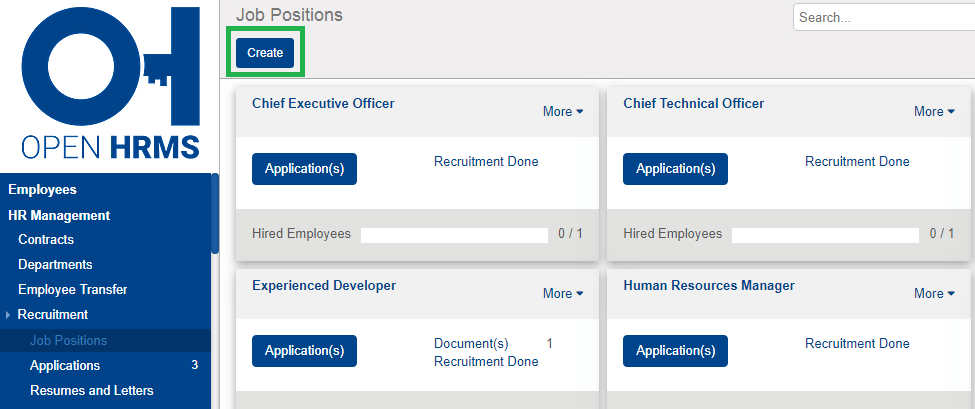
- Easy adding of Job descriptions, Department, Job location by selecting the settings option from the job position.
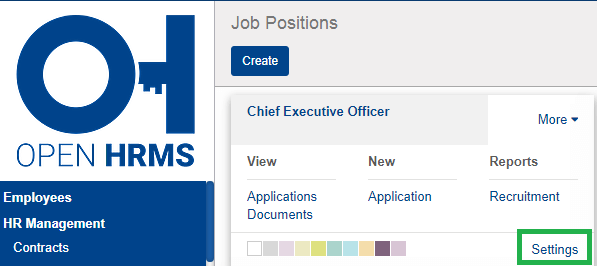
- Quick analysis to total number of applications received for each job position, also look out to various documents such as resumes, and other attachments for the job position.
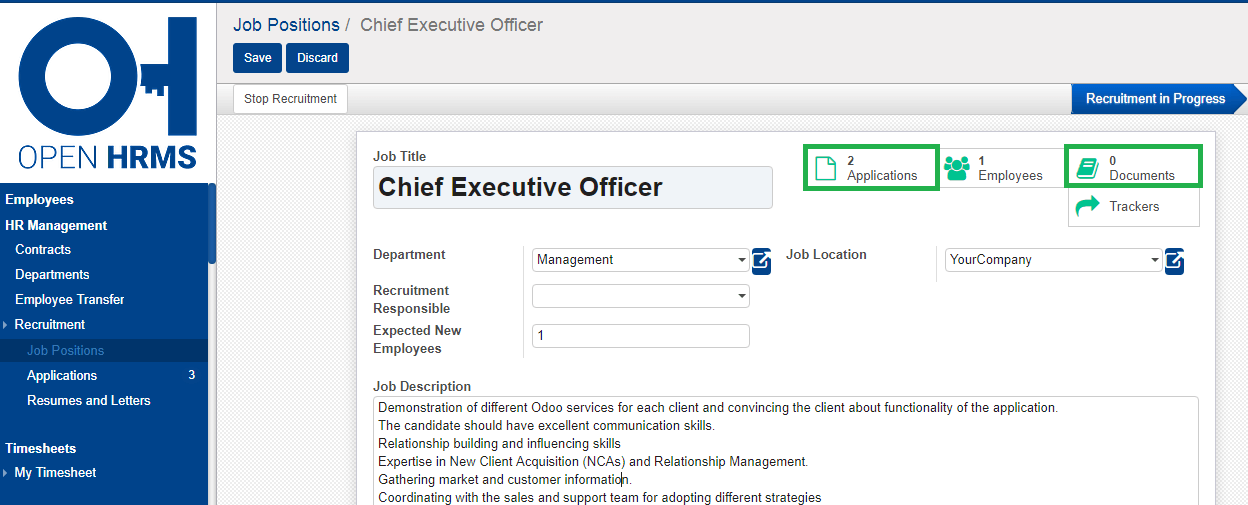
Finding right candidates.
The process includes selecting the best applicants, sending invitation for face to face interview, shortlisting them, further proceeding to next level examination and so on. Therefore, different stages have to be created to find the best applicant.
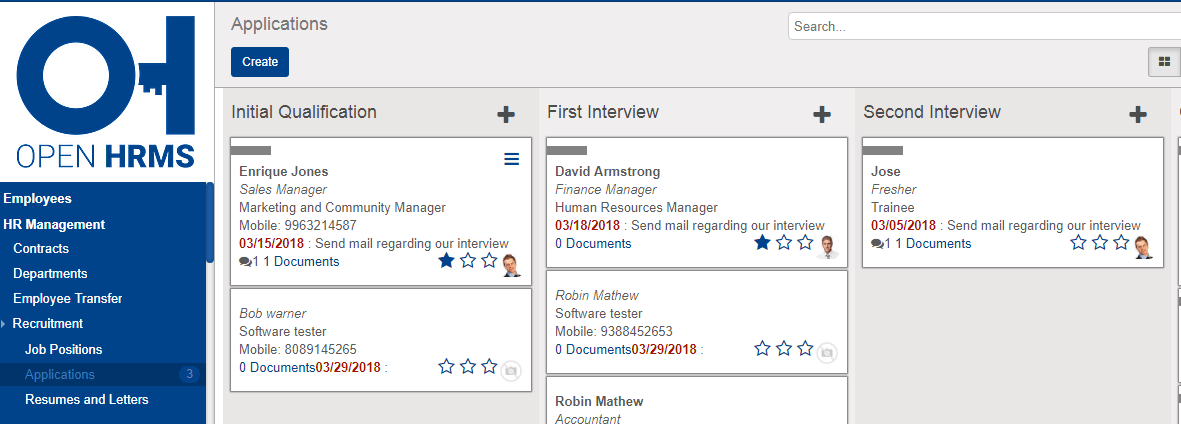
- Channelizing and filtering of the CV’s from various portals such as official website and so on. Easy drag and drop changing of the status of the application.
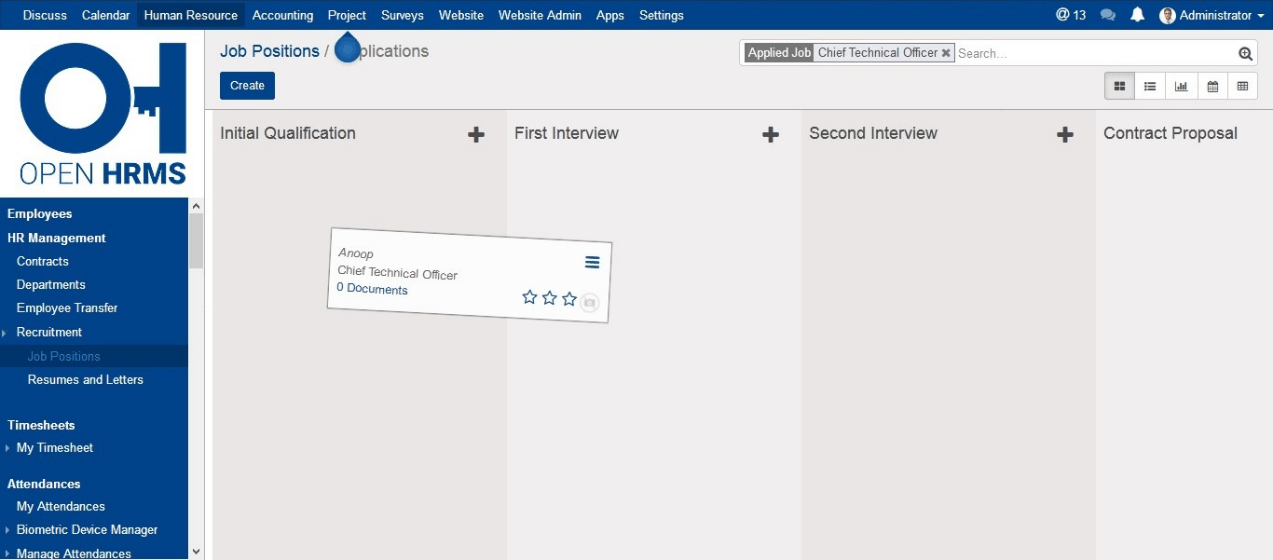
Easy calling off the filled positions
Open HRMS helps you with changing the status of your Job position by clicking Recruitment Done.
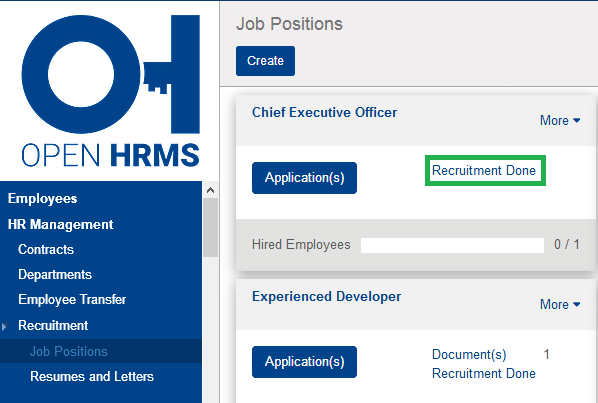
Easy removal of outdated job positions, closing job positions, sending an automatic email to all rejected candidates.
HR management software can do wonders in your employee management operations but OpenHRMS can bring in efficiency in management as well as improve the productivity of the employee's functioning.